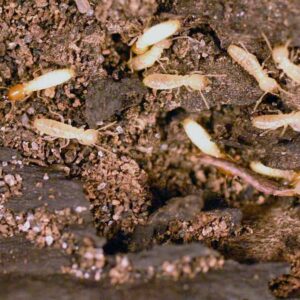Live trees now on the menu

Formosan subterranean termites. Courtesy, UF/IFAS/Thomas Chouvenc
Last week, we reported on a new invasive species of fish in Florida’s waterways. Now we are sharing about an old threat with a new twist – one that impacts homeowners and insurance interests: the Formosan and Asian subterranean termites. Dubbed ‘super termites’ by experts, there’s growing evidence that these little guys are taking their well-known appetite for dead wood and timber to live trees, making them vulnerable to toppling during storm-force winds.
The concern is that these super termites have been hollowing out Florida’s decades-old canopies and compromising their usual resistance to hurricane-strength winds. This means typically durable trees such as oaks are at a greater risk of collapse under high winds. In South Florida’s Palm Beach County, a big population of Asian subterranean termites has established itself within the last 20 years and has now spread extensively into the beautiful, old canopies of the region.
March, being the start of termite swarming season, sees hundreds of thousands of termites taking flight in search of mates to create new colonies. Experts are beginning to recommend that certified arborists conduct annual tree inspections so that we may be able to detect these disruptive termites and their risk early.
The situation is not yet dire enough to start cutting down trees, but these termites may very well contribute to our loss of trees during the next big hurricane. In 2017, about 95% of tree loss in Hurricane Irma was due to improper pruning or root issues, according to the University of Florida’s Institute of Food and Agricultural Sciences. Scientists there believe the Formosan and Asian subterranean termites will contribute greatly to losses during the next big storm.
With the prices of lumber skyrocketing and super termites gaining a foothold in the state, we will need to adapt our hurricane resiliency strategies to account for these factors.
See you on the road,
Lisa

